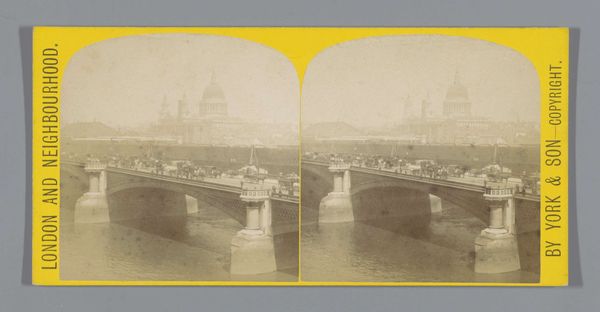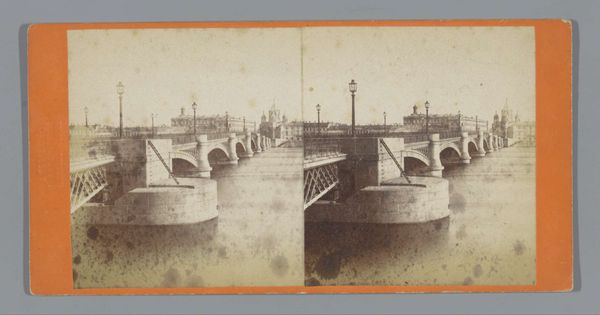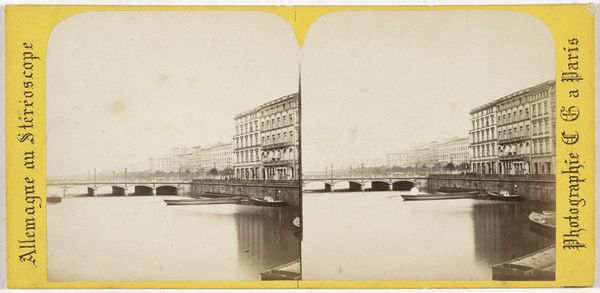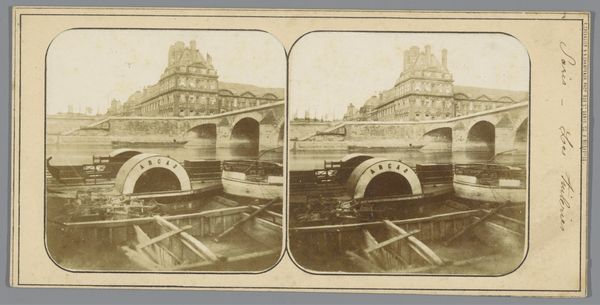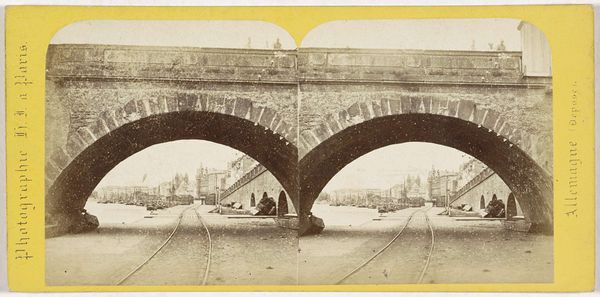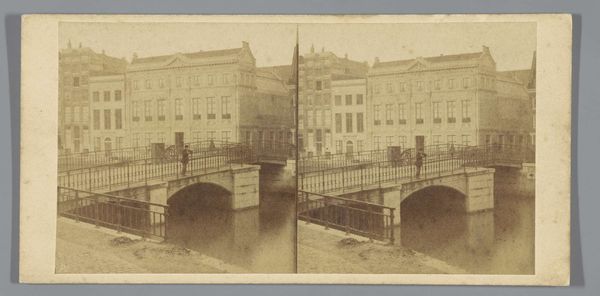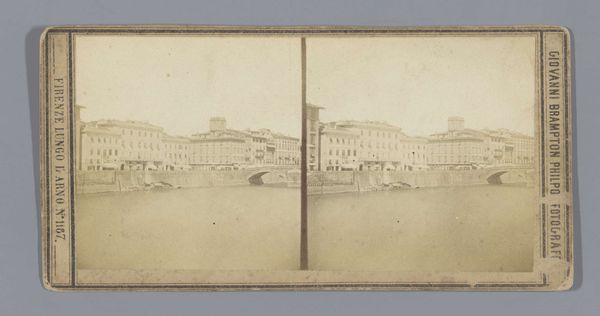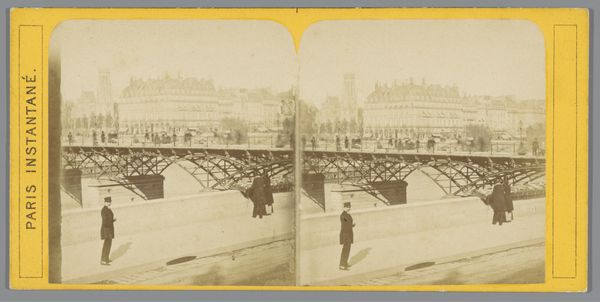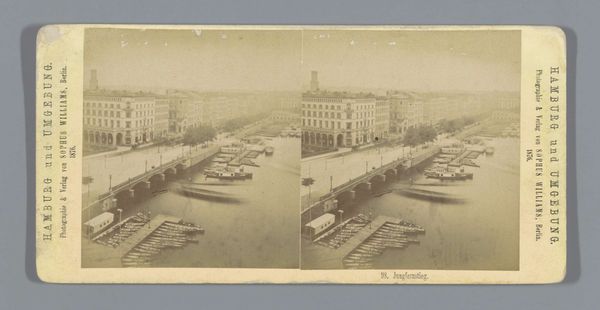
print, photography
# print
#
landscape
#
photography
#
cityscape
Dimensions: height 85 mm, width 170 mm
Copyright: Rijks Museum: Open Domain
This stereoscopic image of London Bridge was created by J. Davis Burton using a photographic printing process. In this period, photography had become a booming industry, offering views of far-off places to armchair travelers. Here, the material – a thin, coated paper – determines the image's appearance, with its sepia tones and soft focus adding to the period charm. The image is doubled to create a 3D effect when viewed through a stereoscope. This novel technology offered a window onto the world, feeding the public’s appetite for the spectacle of modernity. But it was also part of a wider economic system. Studios like Burton’s mass-produced these images, relying on both skilled photographers and a large, often underpaid workforce to print and mount the photographs. Looking at this image, we can reflect on how the technologies of image-making are always entwined with social and economic forces, revealing much about labor, production, and consumption.
Comments
No comments
Be the first to comment and join the conversation on the ultimate creative platform.
